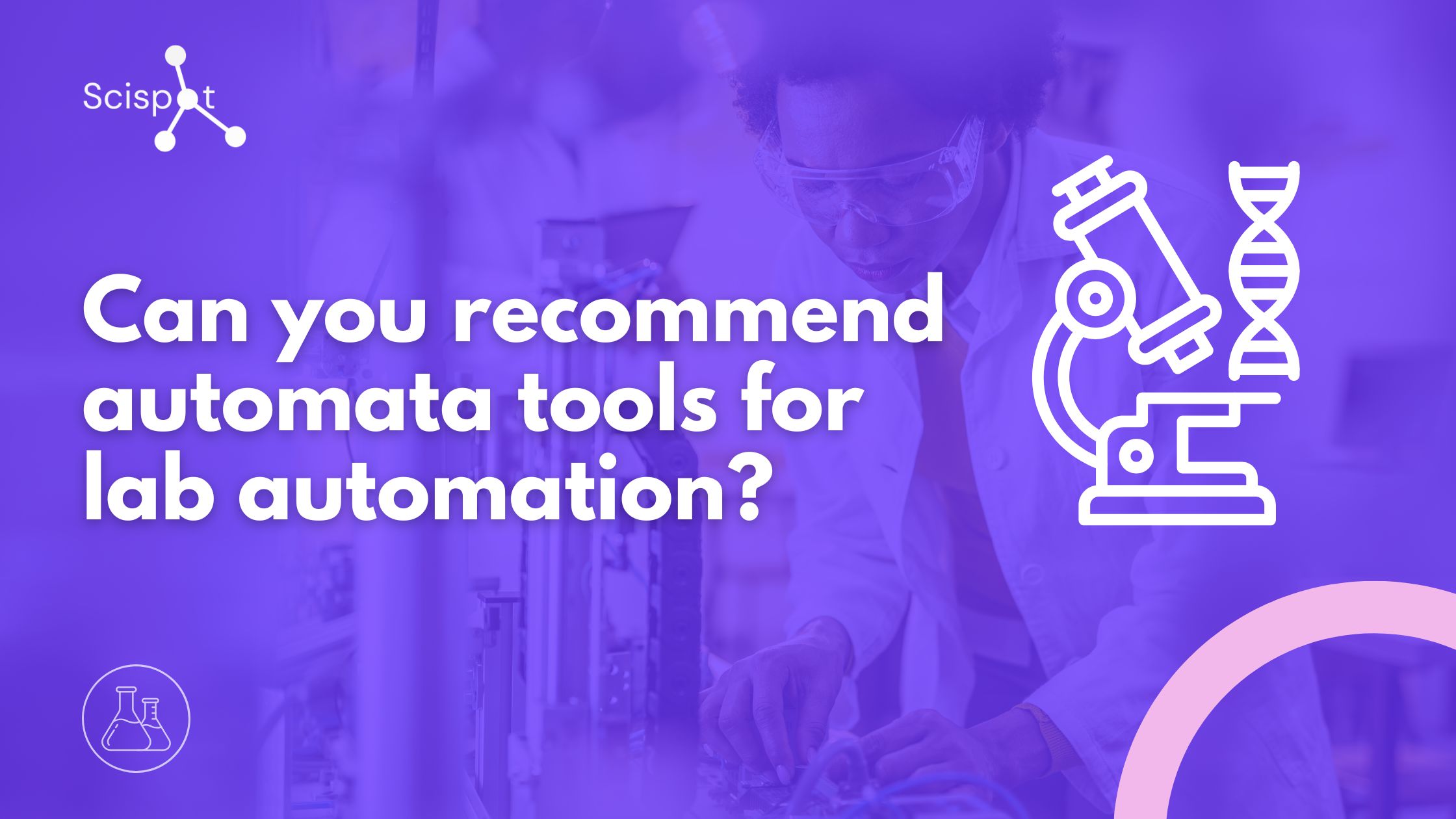Biotech research and development (R&D) labs generate enormous amounts of data daily. From instrument readings to electronic lab notebooks (ELNs) and sample tracking logs, labs rely on accurate data collection and management to drive research forward. However, without lab workflow automation, managing this data efficiently becomes overwhelming. Many labs struggle with fragmented data systems, reliance on manual processes, and outdated tools that slow down research, increase errors, and create compliance risks.
Automating workflows with an advanced biotech data management software can transform research operations. Labs can eliminate inefficiencies, improve collaboration, and allow scientists to focus on experiments rather than administrative tasks. With automation, biotech organizations can accelerate discoveries, ensure compliance, and gain real-time insights into research processes.
The Pitfalls of Manual Lab Management
Many biotech labs still operate with inefficient, outdated systems that create operational bottlenecks. These inefficiencies result in wasted resources, increased error rates, and difficulty scaling research projects. Some of the most common challenges include:
- Data Silos: When lab data is spread across multiple platforms, collaboration becomes difficult. Researchers waste time searching for information instead of conducting experiments, slowing decision-making and impacting productivity.
- Traceability Issues: Without a structured lab data traceability solution, tracking changes in datasets or verifying experiment outcomes becomes difficult. This lack of traceability can lead to research inconsistencies and regulatory compliance challenges.
- Manual Sample and Inventory Tracking: Labs still tracking reagents, samples, and consumables manually risk misplacements, stock shortages, and errors that disrupt workflows. An automated sample tracking system eliminates these risks.
- Limited Project Management Capabilities: Many labs use general project management tools that lack industry-specific capabilities. Biotech project management tools offer better alignment with the complex needs of lab workflows, enabling seamless data tracking and collaboration.
A lack of LIMS and ELN integration further compounds these issues. Without a centralized system, researchers must switch between multiple software platforms, manually input data, and reconcile discrepancies—a process prone to errors and inefficiencies.

How Lab Workflow Automation Improves Efficiency
Biotech organizations that implement lab workflow automation benefit from significant improvements in productivity, accuracy, and research reproducibility. Scispot provides an API-first platform designed specifically for biotech labs to streamline research and data management processes.
Key Benefits of Automating Lab Workflows:
- Seamless Data Integration: Scispot’s system enables LIMS and ELN integration, allowing data from lab instruments, ELNs, and external databases to be consolidated into a single, unified platform. This ensures all team members have access to the latest research insights.
- Automated Sample and Inventory Management: Using an automated sample tracking system, labs can efficiently track samples, reagents, and other consumables. Automated alerts notify researchers when supplies are low, reducing delays and ensuring experiments run smoothly.
- Smart Project Management Tools: Scispot integrates with biotech project management tools like Grafana and monday.com, offering a comprehensive view of research progress, tasks, and team collaboration in real time.
- Enhanced Data Security and Compliance: With built-in compliance tracking, Scispot ensures research meets regulatory standards by maintaining detailed audit trails and access controls. This is especially critical for biotech labs working in regulated industries.
- Scalability for Growing Labs: As biotech organizations expand, their workflows must scale accordingly. Scispot’s platform is flexible enough to support growing research teams while maintaining efficiency and compliance.
The Measurable Impact of Lab Workflow Automation
Biotech labs that transition to Scispot’s lab workflow automation see significant improvements across multiple operational areas. These include:
- 5x Faster Sample Processing: Automating workflow processes significantly reduces the time needed for sample handling, testing, and documentation.
- Improved Data Traceability: A structured lab data traceability solution ensures data integrity, making research more reproducible and verifiable.
- 50% Reduction in Manual Errors: By eliminating manual data entry and automating routine tasks, labs experience fewer errors in experiment documentation and inventory tracking.
- Greater Operational Efficiency: Scientists spend more time conducting research rather than dealing with administrative burdens.
- Cost Savings: Labs reduce reagent waste, streamline procurement, and optimize resource allocation, leading to long-term financial benefits.

How to Implement Lab Workflow Automation in Your Biotech Lab
Transitioning to lab workflow automation may seem complex, but with the right approach, labs can implement automation with minimal disruption. Here’s how:
- Assess Current Workflow Bottlenecks: Identify the most time-consuming tasks that could benefit from automation, such as data entry, inventory tracking, or project collaboration.
- Choose the Right Biotech Data Management Platform: Opt for a biotech data management software like Scispot that supports LIMS and ELN integration and offers a robust automated sample tracking system.
- Integrate with Existing Tools: Ensure the new platform integrates seamlessly with lab instruments, databases, and biotech project management tools for an uninterrupted workflow transition.
- Train Research Teams: Provide hands-on training to ensure lab personnel understand how to maximize the benefits of automation.
- Monitor and Optimize: Continuously track workflow performance and make necessary adjustments to improve efficiency.
Transform Your Lab with Scispot's Lab Workflow Automation
As biotech labs continue to push the boundaries of innovation, lab workflow automation is no longer a luxury—it’s a necessity. Implementing biotech data management software, LIMS and ELN integration, and an automated sample tracking system enables labs to enhance efficiency, improve traceability, and drive faster research outcomes.
Are you ready to take your lab operations to the next level? Learn how Scispot can automate workflows, enhance collaboration, and improve lab performance.
Book a free consultation call with our lab automation experts today!












